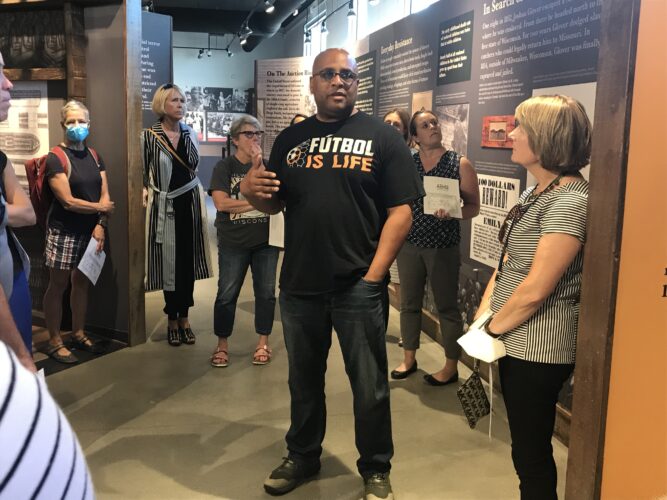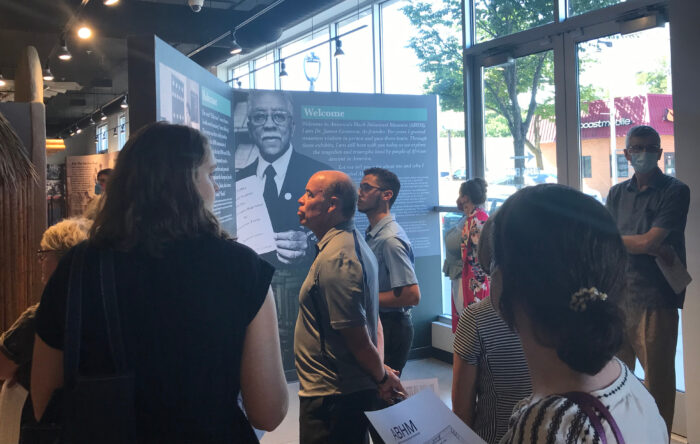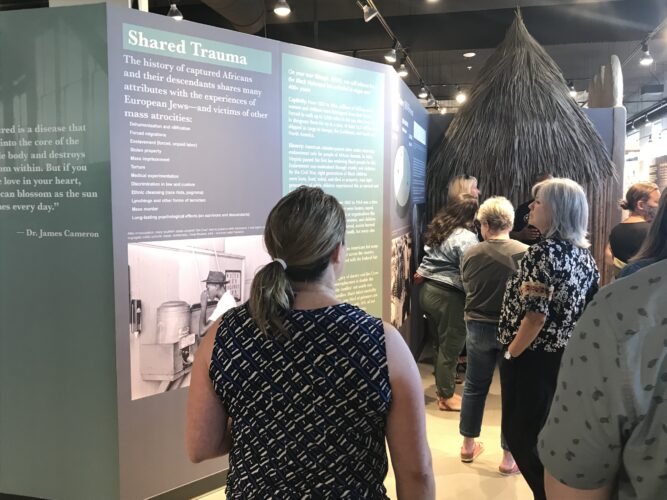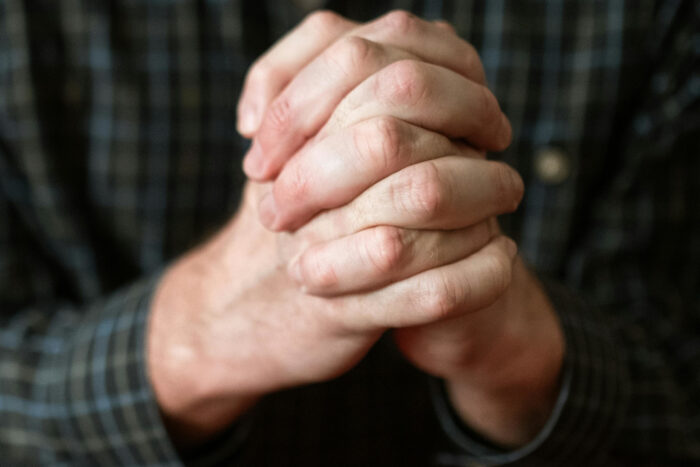
Members of the Marquette University community were offered the opportunity to listen, learn and reflect when they took part in a guided tour of America’s Black Holocaust Museum in Milwaukee on Wednesday, Aug. 10.
America’s Black Holocaust Museum was founded in 1988 by Dr. James Cameron, a lynching survivor and early civil rights pioneer. Cameron believed that once enough white Americans were exposed to an accurate account and the actual nature of the Black American experience, they would oppose racial injustice and help the nation achieve its ideals.
In following that mission, America’s Black Holocaust Museum shares stories that advance visitors’ understanding of our country’s troubled racial past, offers strategies for acknowledging and repairing racial trauma, and helps our nation move into a more just and peaceful future.
“For many folks, the history that is taught in places like America’s Black Holocaust Museum is new information — it was not taught to them in school,” says Jacki Black, director of Hispanic initiatives and diversity and inclusion educational programming at Marquette. “Reckoning with the past and ongoing harm that white supremacy has caused is an important first step toward realizing racial justice. By participating in these sorts of educational experiences, it is my hope that members of our Marquette community not only learn and grow personally, but also feel compelled toward action.”
The tour was led by Dr. Robert Smith, Harry G. John Professor of History at Marquette and director of the university’s Center for Urban Research, Teaching and Outreach, or CURTO. Smith additionally serves as the resident historian for America’s Black Holocaust Museum.
Smith expressed the importance of the excursion, organized by the Office of Institutional Diversity and Inclusion and the Marquette Forum, in helping the Marquette community connect to its mission and further its learning outside of the classroom.
“This is where the importance of us engaging locally is so critical, not only because of our role of being a responsible neighbor in the city of Milwaukee, but to also provide our students and our Marquette family the clear awareness that there’s so much brilliance across our city that maybe we don’t get to see or engage with as a function of us being on campus,” Smith says. “Higher education is not only a product of colleges and universities. There are experts across multiple sectors and there are experts on local communities whose opinions, experiences and expertise can only compliment what we are called to do in the mission of our university.”

The original brick-and-mortar museum was opened on Juneteenth in 1994, featuring expanded exhibits that attracted visitors from around the world. Cameron’s death in 2006, combined with the economic state of the country, led to the museum’s closure in 2008.
America’s Black Holocaust Museum was relaunched virtually in 2012 before moving into its current physical space at 401 W. North Ave. on Feb. 25, 2022. Today, the museum covers over 400 years of history from pre-captivity to the modern day with a level of nuance unfamiliar to many visitors.
“It’s important to let folks know that history is not finite,” Smith says. “Our past and our future are connected in some interesting ways. The history is consistently evolving. We’re learning more and more. That maybe gives us more information about the future.”
Following the guided tour, members of the Marquette community gathered at Jewels Caribbean Restaurant to discuss their experience at the museum.

“During the reflection session after the ABHM tour, I revealed my own experiences as a person of color, but I also shared that there is an ongoing struggle for racial equality,” Michael Vazquez, graduate assistant of the Office of Institutional Diversity and Inclusion, shared in a “We Are All Marquette” reflection. “My small group and I agreed that uncomfortable conversations must occur so that we can grow in knowledge and create inclusive spaces to advance racial justice.”
For those who attended, that was just the start of an important conversation.
“I always encourage participants to ask themselves, ‘What one or two steps can you take to continue these critical learnings and effect change within your own sphere of influence?’” Black says. “How can you make a habit out of inclusive practices? No matter where you are on your journey and no matter what position you occupy on campus, you have a role to play. The work of creating an inclusive campus environment starts with each one of us and is never finished. But there is a spectrum of ways we can continue to engage with this work.”


